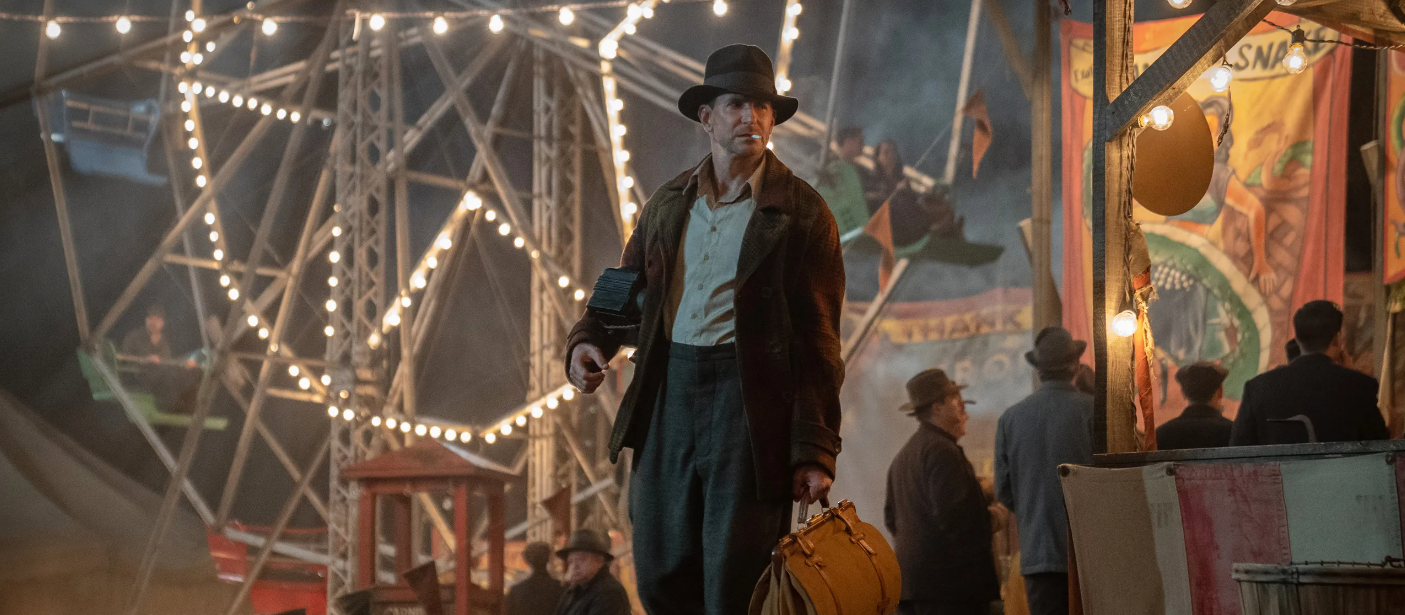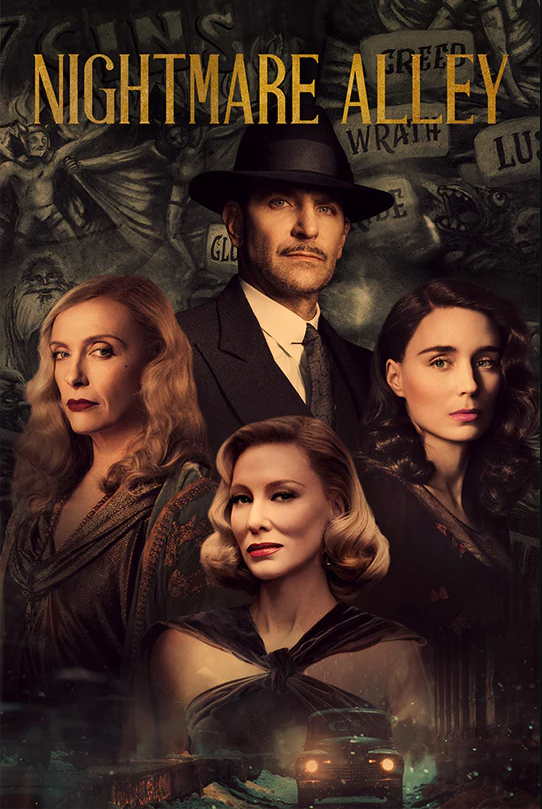

“And when the lies end, there it is. The face of God, staring at you straight. No matter where you turn. No man can outrun God.”
To my recollection, just about every single one of Guillermo del Toro’s films up until Nightmare Alley contained an element of the supernatural. And so even though the film’s source material (William Lindsay Gresham’s 1946 novel) does not contain such touches, one’s instinct is to look for them anyway.
First we’re presented with a geek show, wherein a feral human (Paul Anderson) eviscerates a chicken with his bare hands. But, as we soon learn from Clem (Willem Defoe), the carnival’s malevolent proprietor, the geek is not a grotesque; just an alcoholic brought to his current state by a steady diet of opium-laced booze. Next is the clairvoyant tarot reader Madame Zeena (Toni Collette) and her mentalist husband Pete (David Strathairn), who soon reveal their methods of cold reading and coded language. Indeed, all of the performers are simply putting on an act, including Molly (Rooney Mara), who does tricks with electricity, and Bruno (Ron Perlman), who performs impossible feats of strength.
Even so, as the film settles in and Stanton Carlise (Bradley Cooper) takes center stage with his psychic act for the rich and powerful of 1940s Buffalo, the character comes to believe in his own oracular abilities. When he was first starting out, he used every shady technique in the book, even going so far as to pursue a relationship with high-caliber psychologist Dr. Lilith Ritter (Cate Blanchett) in order to access the confidential files she has on the local elites. But when he’s contacted by Ezra Grindle (Richard Jenkins), an influential man with violent tendencies who seeks closure on his mistress’s death, Stan is so blinded by hubris that he is able to talk his way through a lie detector test and into the man’s confidence. He convinces Grindle that he can speak to the dead and, under the right circumstances, even materialize them for brief periods. This plants an evil seed that ultimately brings the film to its wicked conclusion.
Unfortunately, after a magnificent opening in which del Toro is able to play to his strengths with the macabre-tinged period drama at the carnival, the film loses a bit of its potency, or at least that’s how I came to comprehend the protracted game of who-is-conning-who. Everyone is putting on some kind of an act, as dreadful sins are dredged up from the past and moral depravities are revealed in rare moments of vulnerability. It becomes difficult to parse whether the actors aren’t quite meshing or if their characters are supposed to be stuck in these weird mind games wherein each person is presenting a situation-dependent false persona.
Or, yeah, it could just be that most everything that makes the film lively and captivating is frontloaded—including the rich carnival setting and the performances of Collette, Strathairn, and Defoe. Once it becomes a character study of a cynical but maybe a little bit sympathetic charlatan, with a simple if apt message disguised by rich stylization, it quickly becomes obvious and a little overbearing. It never quite justifies building its narrative around its protagonist, let alone outlasting Edmund Goulding’s 1947 adaptation by forty minutes. A few nasty surprises and the high production value make the stretched out second half of the film worth seeing through, but it doesn’t match the promise of the opening act.